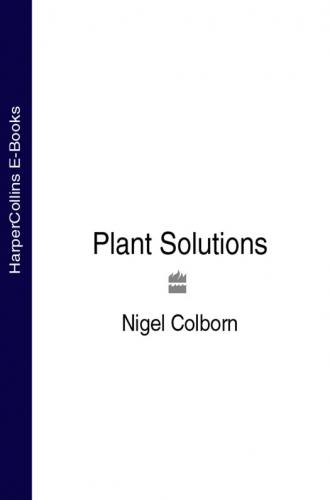Excessively alkaline (limy) or acid soil Limy soil can be made less alkaline by applying sulphur, but the effect is limited. Acid soil can be limed to bring the up the pH, but that effect is difficult to reverse. Of all problem sites, these two are the easiest to solve, simply by wise plant selection. If your soil is limy, learn to live without rhododendrons, but to revel in pinks, clematis and the thousands of species which love alkaline conditions. If your soil is acid, your azaleas, camellias, summer heathers and ravishing blue Himalayan poppies will be the envy of your friends.
Having an Open Mind
With so much at stake, it is far too easy to forget that we garden largely for pleasure – or if we don’t, we should! You can therefore be pretty relaxed about how you try out various planting combinations, and can afford to make mistakes. Plants and planting schemes are plastic, that is, they can be moulded or changed as you go. Only the boldest artist who dares to try something outrageous or at least, unprecedented, is likely to end up with a creation that is special.
New gardeners sometimes become so anxious about getting everything right that they forget to take pleasure in what they are doing. Experienced gardeners, however, are constantly learning. They make frequent mistakes and will enjoy a lifetime of adjusting, re-planting, devising new projects, trying out new plants and just generally messing about in their gardens. In fact the only serious, damaging and lasting mistake you can ever make, with your garden, is to think that you have finished.
Flowers come in a rush, through spring and summer, and mid-winter plants are always sought-after. Too few of us, however, remember to plan for the ‘forgotten season’ – the autumn. This border of asters, chrysanthemums and other short-day flowers shows what superb colour autumn can bring.
Annuals for gap filling in mixed border
Agrostemma githago
Corn Cockle Annual
Cornfield annual with long, thin, somewhat lax stems, narrow, slightly hairy leaves and a long summer succession of large, rosy purple flowers, each with dotted lines leading to the centre. Support is necessary, either from other plants or with stakes or sticks. Selections include ‘Ocean Pearl’ – white with silver lines – and the pale ‘Pink Pearl’.
Soil preference: Any
Aspect: Full sun
Season of interest: Summer
Height and spread: 1m plus (3ft plus)
Companion plants: Excellent annual for the border back, especially if it can lean against shrubs or come up among perennials with better standing qualities. Also fine in a naturalistic annual border with other cornfield annuals such as cornflower and larkspur.
Adonis annua
Pheasant’s Eye Annual
A cornfield annual with emerald green, feathery or filigree foliage on narrowly branched stems. From early summer, a succession of small, intensely blood red buttercup-like flowers nestle among the soft foliage, creating a strong contrast. Autumn sown plants grow larger and flower more profusely and for longer than those which germinate in spring.
Soil preference: Any, not too dry
Aspect: Sun, part shade
Season of interest: Summer
Height and spread: 45cm × 15cm (18in × 6in)
Companion plants: A wild species with modest beauty, but effective when dotted among perennials in a mixed border or growing in gravel where it will take over from such late spring bulbs as fritillaries or late tulips.
Malcolmia maritima
Virginian Stock Annual
Almost every child’s first plant from seed, since it will flower a few weeks after sowing. Narrow foliage and slender stems produce a short but intense succession of brightly coloured, four-petalled flowers. Good seed series include flowers in shades of pink, white, cream, purple or near red, but these plants need to grow in bold drifts to create a strong effect.
Soil preference: Sandy, free-draining but not too dry
Aspect: Sun or part shade
Season of interest: Summer
Height and spread: 20cm × 10cm (8in × 4in)
Companion plants: Best sown in patches at a border front, with taller perennials behind, or among cottage garden flowers in an informal planting. These are often blended with night scented stock, Matthiola bicornis, for evening fragrance.
Papaver rhoeas ‘Shirley Series’
Shirley Poppy Annual
Garden World Images
Developed in the 19th Century by the rector of Shirley, Rev. Wilkes, from the showiest of cornfield weeds, this series has flowers ranging from lemon through pink to red, some with picotee edges in pale pink or white. The pollen is always golden, in contrast with wild field poppies, whose pollen is dark grey. More annual poppies on pages ref 1 and ref 2.
Soil preference: Any
Aspect: Sun
Season of interest: Summer
Height and spread: 30–60cm (1–2ft) × 20–40cm (10in–1ft 4in)
Companion plants: Other annual poppies work beautifully with Shirley seedlings, especially if allowed to naturalize in a gravel garden or sown at random in an annual border with such annuals as marigolds, clarkias, larkspurs and cornflowers.
Nigella damascena
Love-in-a-mist Annual
Lacy, filamentous foliage makes a soft and alluring background for the flowers, whose distinctive blue petals nestle among
